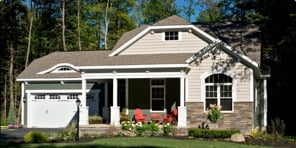Here are some quick facts and tips for assuring that your light bulbs are saving the most energy and money possible.
Bye Bye to the Incandescent Light Bulb
You may have noticed that the incandescent light bulb has faded out of popularity. This is probably because many of them have become outlawed. As of January 2014, 40 and 60-watt incandescent bulbs are no longer permitted for manufacturing. Therefore, it's no surprise that 100 and 75-watt bulbs have already been discontinued. Federal energy-efficiency regulations that were set in 2007 are now affecting every household in America. Beginning in 2012, EISA2007 required that all bulbs need to use 25% less energy than incandescent ones. Specialty light bulbs are exempt (appliance bulbs, colored bulbs, three-way bulbs, for example).
The Solution
Their replacements include compact fluorescent bulbs (CFLs), light-emitting diodes (LEDs) and halogen-gas incandescent. All of these are more energy efficient than traditional incandescents, so you'll see savings on your utility bill. That's great news. But, some of us need a primer on what each type of new bulb can and can't offer.
Here's a rundown of the of what you should be looking for with the current replacement choices now in stores:
Brightness
Bulb brightness is measured in lumens. You should look for bulbs with the brightness you want at the lowest wattage. This way you are getting more for your money. A 60W traditional incandescent is comparable in brightness to a 15W CFL, a 12W LED, and a 43W halogen.
Fit
Many of the new bulbs are different shapes than the old incandescents. Before you buy a bulb, be sure that it will fit into the light fixture, or inside the shade. Take an old bulb along to compare when you shop. Most lighting fixtures accept the new bulbs.
Yearly energy costs and life expectancy
The US Department of Energy estimates that if you replace 15 standard incandescent bulbs with any of the high-efficiency bulbs available, you can save about $50 each year. These bulbs typically use 25-80% less energy and can last 3-25 times longer. For example, a 12W LED bulb used for two hours a day (at 11 cents/kilowatt-hour) costs $1 per year in energy; a comparable 60W traditional bulb costs $4.80 per year in energy. The LED bulb life is 25,000 hours while the traditional bulb needs replacement in 1,000 hours.
Lamp color “temperature”
Light color is measured in kelvins (K): a higher number will give you cool color, like daylight; a lower number offers warm, ambient color similar to the traditional incandescent. Which one you choose depends upon what type of lighting you need. If your fixture is used for task lighting, such as lights over the kitchen counter where you prepare foods, you may want a brighter light (more than 5,000 K). If you are searching for ambience and mood lighting, you'll want something around 2,700 K.
BULB CHOICES
Halogen-gas Incandescents
These bulbs have a capsule inside that holds gas around the filament. This increases bulb efficiency. A 72W halogen is equal in brightness to a 100W incandescent bulb. Halogens can be used with dimmers. However, these are not the most efficient options around.
Compact Fluorescent Lamps
CFLs are compact versions of the long tube fluorescent lights that have long been available. They are often used in kitchens and garages now. The compact versions may be curly, or the spiral tube might be enclosed in a cover similar to the bulb shape with which you are familiar. They use less electricity and typically pay for themselves in nine months. A CFL uses one-third the energy of the halogen bulb. Some are dimmable, but not all. Since they contain a small amount of mercury, these bulbs need to be properly recycled.
Light Emitting Diodes
LEDs are solid-state lights utilizing semiconductors that convert electricity into light. These bulbs are the most energy efficient bulbs around, using only 20-25% of the energy that traditional incandescent bulbs use, and they last 25 times longer. They use only 25-30% of the energy that halogens use. LEDs require special equipment to make them dimmable.





.svg)
.jpg?width=83&name=30th%20Anniversary%20seal%20digital2%20(1).jpg)

